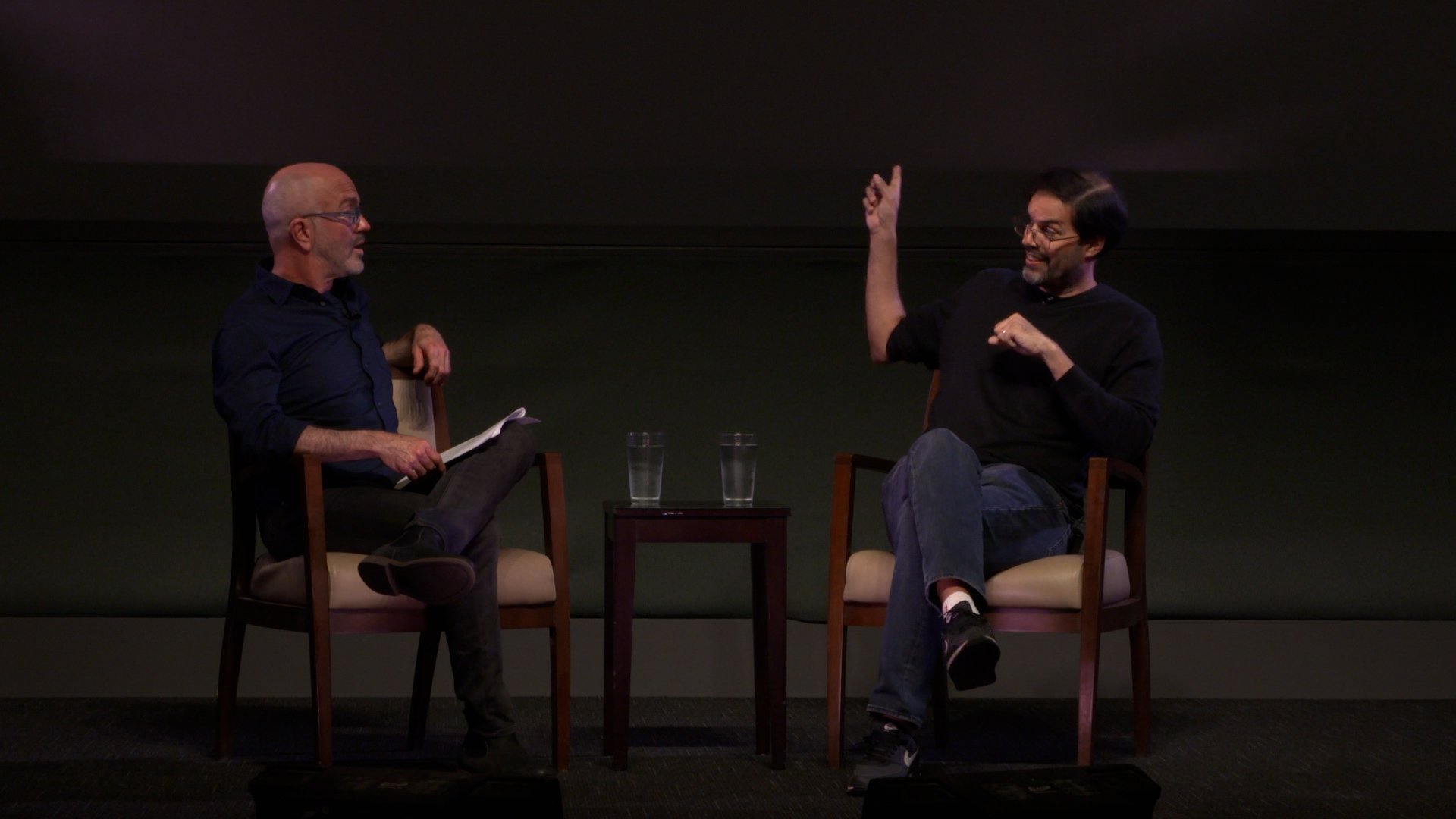By Audrey Lin
People carry the echoes of history inside their bodies, collecting aural memories that have been preserved in natural and human-made environments, says cinema sound editor Javier Umpierrez.
“I like this idea that you are part of history even if you do not know the history,” Umpierrez told a UCSB audience earlier this month. He worked closely with director and screenwriter Apichatpong Weerasethakul to create intricate soundscapes in the 2021 fantasy mystery film Memoria, that deals with political unrest in Colombia in the 1970s and 80s. Memoria won the Jury Prize at the 2021 Cannes Film Festival, subsequently garnering widespread critical acclaim.
UCSB Film and Media Studies professor Greg Siegel, left, and cinema sound editor Javier Umpierrez. Photo courtesy of the Carsey-Wolf Center
Umpierrez joined moderator Greg Siegel, a UCSB Film and Media Studies professor who is currently researching unexplained sounds, for a post-screening discussion about the film. It was the inaugural feature of “Panic!” a fall series presented by UCSB’s Carsey-Wolf Center that explores the relationship between media, moral panic, and socio-cultural unrest.
The film Memoria, screened by UCSB’s Carsey-Wolf Center.
Memoria follows Scottish expatriate Jessica Holland, played by Tilda Swinton, as she begins to hear a mysterious banging noise. Jessica operates an orchid business in Medellín, Colombia, and is visiting her sister Karen at a hospital in Bogotá. She receives help from sound engineer Hernán and an archaeologist named Agnes while investigating the booming noises, which are audible only to her. The sound landscape contributed to a sense of uncertainty that pervades the film, the sound editor said.
“The supernatural element [was] developed during editing,” said Umpierrez. “[It] was more tied to the history of terrorism in Colombia.” He said the movie explores the idea that the sound is coming from a distant past and echoing through the history. “Reality is subjective and how you experience reality through your senses is very personal.”
Cinema sound editor Javier Umpierrez speaking on Colombia’s history, directorial intention, and the construction of silence.
Umpierrez said Apichatpong’s initial script pulled explicitly from Colombia’s unrest in the 1970s - 80s. The final version that the filmmaker released alludes to that history, but skews more toward the metaphysical, a change in approach that emerged over time. The film’s theme is rooted in transnationalism and has a unique way of portraying bodies as vessels for cumulative memory, he said.
“Nothing is an accident, everything is a decision in the movie,” Umpierrez said about sound design in Memoria. “Everything that you hear is there for a reason, sometimes to generate plain reality, sometimes to generate rhythm. We tried to generate a very dense reality so the director could choose what to focus on.”
He also stressed the role of silence. “Silence is a construction. Not putting sound is a decision. In particular, the director is really into what I call ‘dense silence’ [where] you can feel that it is silent, but it has a lot of density and sometimes has a lot of information.”
Umpierrez said the script he was given contained a lot of meticulous sound description. He and his team spent three months layering ambient noise and sound effects recorded around Bogotá. Umpierrez pointed out the film’s natural way of presenting deeply unnatural phenomena by magnifying details such as traffic audio, which metropolitan residents perceive as a mundane part of life.
Even if you do not realize it, Umpierrez said, history is alive and has an effect on people and a country’s past will always influence them.
Audrey Lin is a second-year Writing & Literature major at UC Santa Barbara. They are a Web and Social Media intern with the Division of Humanities and Fine Arts.




